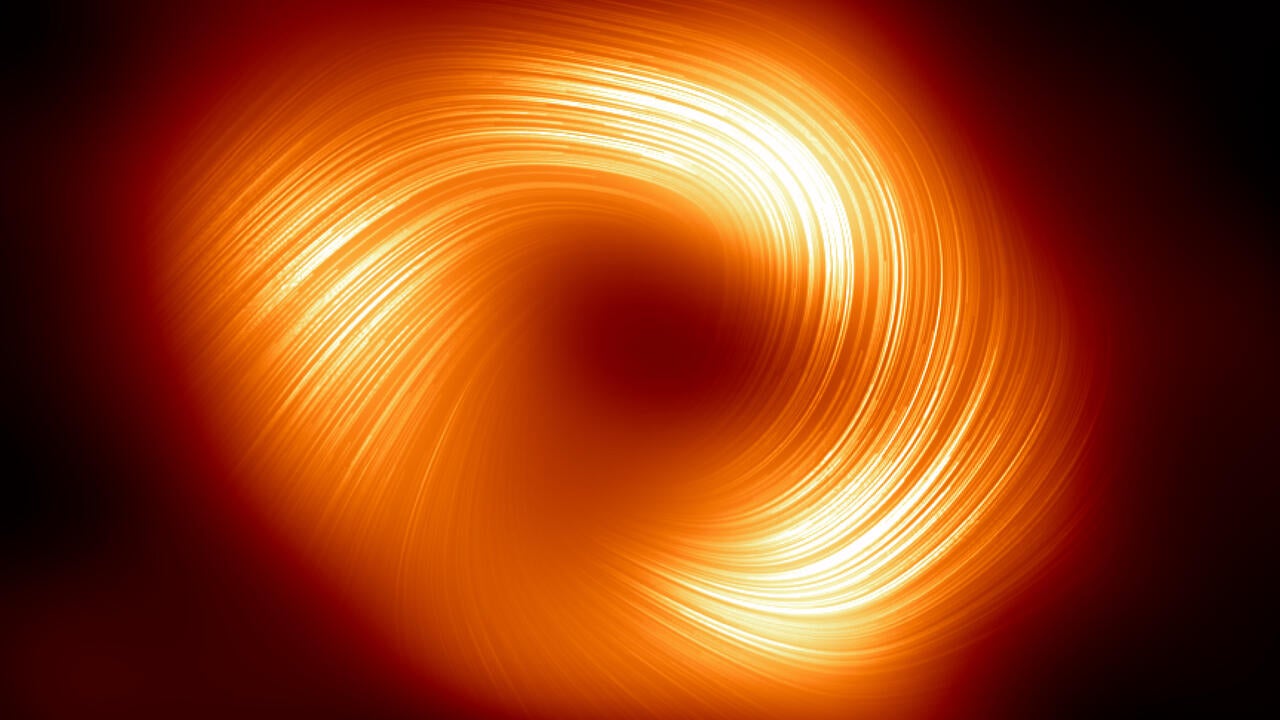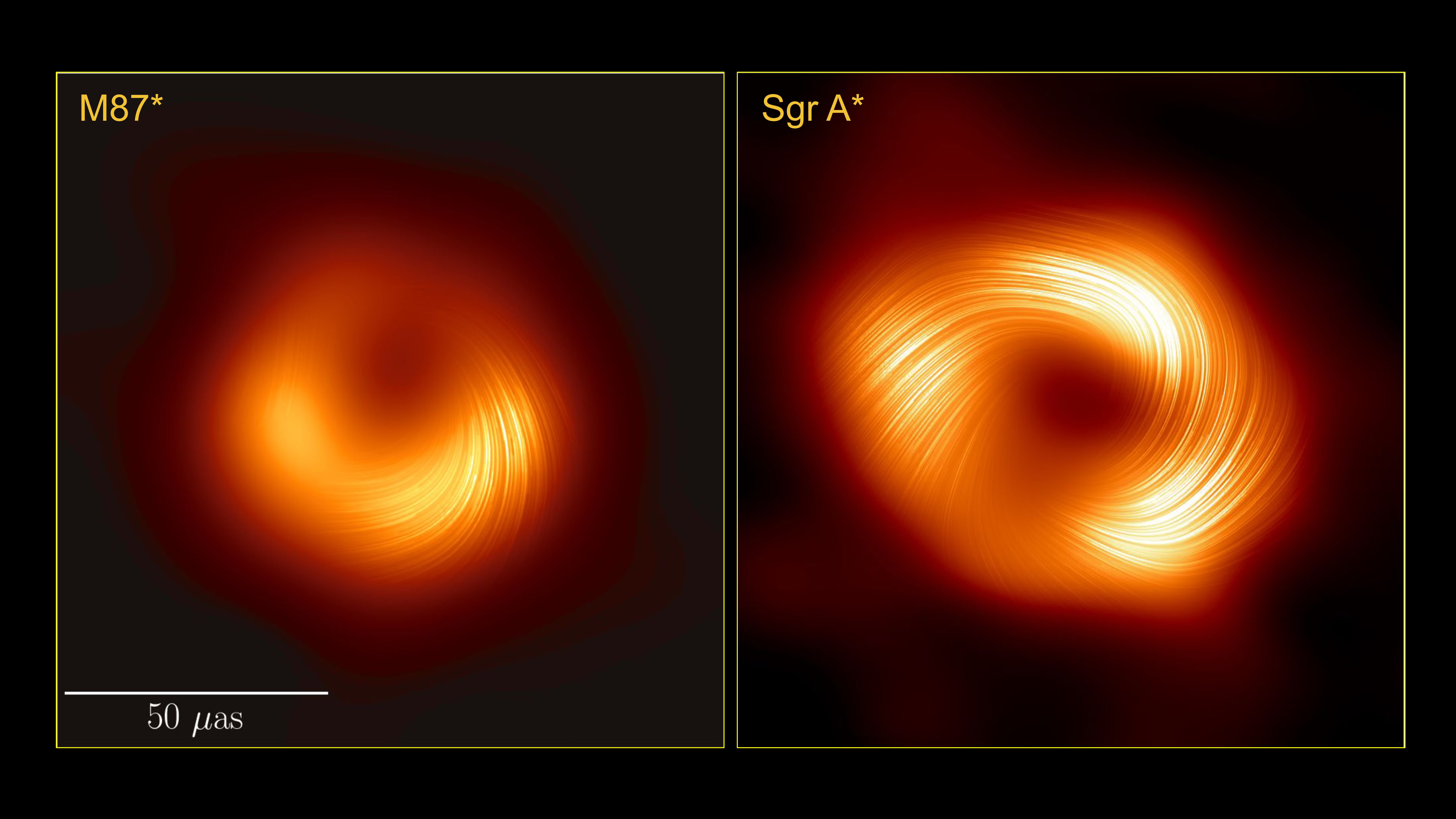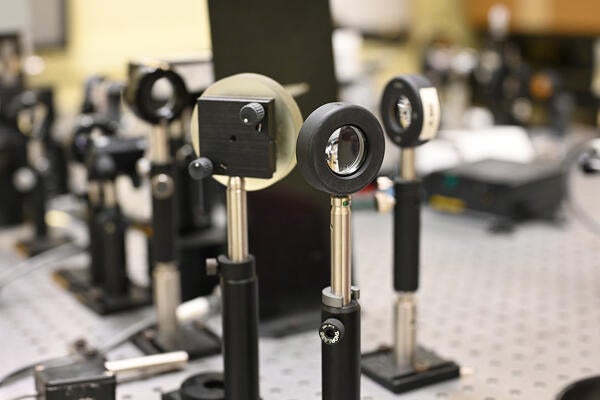
Milky Way black hole’s magnetic field mapped for first time
Characteristics of the supermassive black hole at the heart of our galaxy captured in unprecedented detail by international team that includes Waterloo scientists

Characteristics of the supermassive black hole at the heart of our galaxy captured in unprecedented detail by international team that includes Waterloo scientists
By Media RelationsLong-held theories on how black holes like the one at the centre of our galaxy, the Milky Way, evolve were proven right this week thanks to research made possible by Canadian scientists.
A team of researchers from the University of Waterloo and Perimeter Institute who are members of the global Event Horizon Telescope (EHT) collaboration, developed a powerful framework called THEMIS that processes the EHT data, generating clear and accurate images that cut through noise and identify what really exists just outside the black hole.
While the first photos of the Sagittarius A* (Sgr A*) black hole were unveiled in 2022, the new images revealed its plasma ring, but also the magnetic field lines that shape and organize it.
“Sgr A* is like a frenetic toddler,” said Dr. Avery Broderick, a professor at the University of Waterloo’s Department of Physics and Astronomy and associate faculty at Perimeter Institute. “We’re seeing for the first time the invisible structure that shepherds the material within the black hole’s disk and drives plasma to the event horizon, helping it to grow.”

Side-by-side comparison of the magnetic fields around the black hole at the centre of the M87 galaxy (left) and the Sgr A* black hole at the centre of our galaxy, the Milky Way.
THEMIS – led by Broderick and his team – assessed the credibility of any given image of the black hole by providing a reliable statistical method for studying the information Sgr A* sends us from across the galaxy. It also can image black holes like Sgr A* even though they refuse to sit still thanks to swirling plasma, which is constantly churning away over short timescales.
That can be modelled by THEMIS to provide an estimate for the “noise” in the data, which can be averaged out to produce a clear, time-averaged image of Sgr A* in spite of its rapid variability.
The researchers’ results reveal strong polarization patterns in the signals that Sgr A* emits. Polarization – a property describing the orientation of light wave oscillations – is the same principle that sunglasses use to eliminate glare in multiple directions. By measuring the polarization, scientists are able to measure the structure and strength of Sgr A*’s magnetic fields.
“The polarized light we see from Sgr A* is striking,” Broderick said. “Not only is it highly polarized, at three times more polarization than the black hole at the centre of the M87 galaxy, but it’s also highly organized. This new image limits the density of the plasma orbiting Sgr A* and reveals the magnetic fields that govern its fate.”
According to astronomers’ best models of black hole evolution, the magnetic fields in the accretion disk need to be strong enough to push the accreting plasma around. The new results from Sgr A* (and those from its much larger cousin M87* previously) provide the first direct observational evidence to support those models.
This new research marks a milestone in black hole astronomy, helping to tell the story of black hole evolution and bring the unruly core of our galactic neighbourhood into sharp focus.
This research was presented in two papers by the EHT collaboration published on Wednesday, March 27 in The Astrophysical Journal Letters: "First Sagittarius A* Event Horizon Telescope Results. VII. Polarization of the Ring" and "First Sagittarius A* Event Horizon Telescope Results. VIII. Physical Interpretation of the Polarized Ring".

Read more
12 Waterloo students and postdoctoral fellows receive up to $10,000 in funding to develop their green-tech solutions

Read more
Waterloo co-op students earn opportunity to contribute to SickKids research

Read more
Non-invasive and accessible testing can detect symptoms of Alzheimer’s disease long before symptoms occur
The University of Waterloo acknowledges that much of our work takes place on the traditional territory of the Neutral, Anishinaabeg and Haudenosaunee peoples. Our main campus is situated on the Haldimand Tract, the land granted to the Six Nations that includes six miles on each side of the Grand River. Our active work toward reconciliation takes place across our campuses through research, learning, teaching, and community building, and is co-ordinated within the Office of Indigenous Relations.